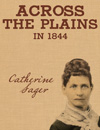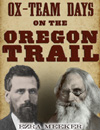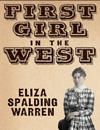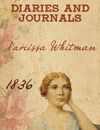Power
Horse, mule or oxen?
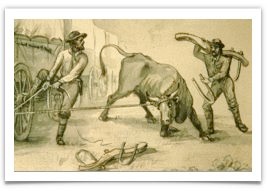 What animal would pull the emigrant's covered wagons? That question was hotly debated among the Oregon-bound pioneers.
What animal would pull the emigrant's covered wagons? That question was hotly debated among the Oregon-bound pioneers.
Horses were quickly rejected because they could not live off prairie grasses along the way. As a result, most of the emigrants decided on oxen. They were strong; could live off grass or sage; and were less-expensive.
Emigrant Peter Burnett:
"The ox is a most noble animal, patient, thrifty, durable, gentle and does not run off. Those who come to this country will be in love with their oxen. The ox will plunge through mud, swim over streams, dive into thickets and he will eat almost anything."
There was just one problem: oxen were slow—about 2 miles-per-hour. There was an alternative for those in a hurry: mules. Mules were faster, and they too could live off prairie grasses. But many believed mules didn't have quite the staying power of oxen. But perhaps the biggest problem with mules was their cantankerous disposition.
Emigrant John Clark:
"We had to risk our lives in roping them. After being kicked across the pen some half-dozen times and run over as often, we at last succeeded in leading them out. It was laughable."
Emigrant Henry Cook:
"What perverse brutes these mules are. The beasts! How I hate `em."
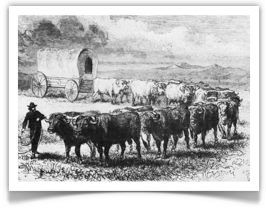 LEFT: The movies often show pioneers sitting in a wagon with a team of 2 oxen. That’s all wrong. Teams were 4, 6, even 18 animals. And, unlike a horse, someone has to walk along and “drive” an ox.
LEFT: The movies often show pioneers sitting in a wagon with a team of 2 oxen. That’s all wrong. Teams were 4, 6, even 18 animals. And, unlike a horse, someone has to walk along and “drive” an ox.

